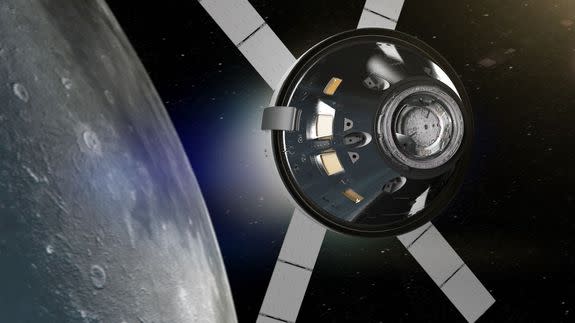NASA may put astronauts on the first flight of its new mega-rocket

NASA astronauts may fly to space atop the agency's brand new mega-rocket a lot sooner than expected.
On Wednesday, NASA's acting administrator Robert Lightfoot sent out a memo to employees explaining that he has asked the agency to perform a study looking into what it would take for NASA to launch people on the first flight of the giant Space Launch System rocket. This rocket system, which would be the agency's most powerful yet, is currently under development.
It's generally considered a risky move to put astronauts on the first flight of an untested rocket.
SEE ALSO: Watch NASA test the 'largest, most powerful rocket booster ever built'
As it stands now, the SLS program has been working toward launching an uncrewed flight of the rocket and Orion spacecraft to the vicinity of the moon in a year or two, but the leaked memo, posted by the blog NASA Watch and confirmed as authentic with the space agency, throws that timetable and mission profile, called EM-1, into doubt.
The current timeline does not call for humans to fly on EM-1. In fact, astronauts have not been expected to fly atop SLS until the early 2020s.

Image: nasa
"I know the challenges associated with such a proposition, like reviewing the technical feasibility, additional resources needed, and clearly the extra work would require a different launch date," Lightfoot said in the memo.
"That said, I also want to hear about the opportunities it could present to accelerate the effort of the first crewed flight and what it would take to accomplish that first step of pushing humans farther into space."
Launch vehicles, by design, are pushed to their limits in order to break the bonds of Earth's significant gravity, so there are always risks associated with using them. Even rockets considered extremely dependable can occasionally fail.
Orion does have an abort system designed to quickly fly the crewed craft away from the rocket if something were to go wrong during launch.
While this would be the first flight for SLS, it won't be the first flight of Orion.
The spacecraft, designed to carry crew to deep space destinations like the moon or an asteroid, flew once before in 2014 during a test flight that delivered it to orbit and saw it fly safely back to Earth.
That flight went well, though the spacecraft didn't have a complete life support system at the time.
There have also been real questions about NASA's ability to meet its current deadlines under the SLS and Orion testing timeline today.
A report released by the independent Government Accountability Office found that the SLS program will have a hard time even meeting its 2018 launch readiness goal due to technical issues and budget. Orion is also facing budget and technical issues.
There is also some historical precedent for Lightfoot's study request.
NASA's first flight of the space shuttle in 1981 did have astronauts onboard, and while the Saturn V rocket did have a few flights under its belt before Apollo 8, that mission did send astronauts to the moon's vicinity, farther than any Saturn V had launched a spacecraft before.
Lightfoot's memo also makes mention of President Donald Trump's vision for the U.S. space program.
"President Trump said in his inaugural address that we will 'unlock the mysteries of space,'" Lightfoot said in the memo. "Accordingly, it is imperative to the mission of this agency that we are successful in safely and effectively executing both the SLS and Orion programs."
